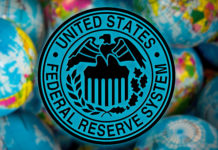Retail sales fell 1.0% month-on-month (m/m) in March, much weaker than the consensus forecast calling for a more moderate pullback of 0.4% m/m. February’s reading was revised up marginally to -0.2% (from -0.4%), making today’s print just a tad less unfavorable.
Sales in the auto sector declined for the second consecutive month, largely driven by weak sales at motor vehicle sales (-1.5%) whose February’s reading was revised up to -1.6% (from the previously reported -2.0% m/m). Sales at automotive parts & tire stores declined by 2.7% m/m. Excluding autos, retail sales were down by 0.8%.
Sales in other more volatile categories were also softer in March. The building materials and equipment category fell 2.1% m/m while sales at gasoline stations declined 5.5% m/m – in line with weaker gas prices.
Retail sales in the “control group”, which excludes the above categories and is used to estimate personal consumption expenditures (PCE), fell by 0.3% m/m from an unrevised 0.5% m/m in February.
Most categories were in the red in March with the biggest declines coming from general merchandise stores (-3.0% m/m), clothing & accessory stores (-1.7% m/m) and furniture, electronics & appliance stores (-1.6% m/m).
Gains were reported at non-store retailers (+1.9% m/m), health & personal care stores (+0.3% m/m), sporting goods, hobby, book & music stores (+0.2% m/m), and miscellaneous store retailers (+0.2% m/m).
Food services & drinking places – the only services category in today’s report – was up by 0.1% m/m in nominal terms, but after adjusting for inflation fell by 0.6% m/m.
Key Implications
As expected, spending continued to give back some of the gains from earlier in the quarter, after a solid start to the year. Accounting for revisions, nominal retail trade grew by 7% (annualized) in Q1 2023 and 3.1% when removing the effect of rising prices. Most of the gains came from sales at restaurants with the second biggest contribution coming from the auto sector where improvement in production helped fuel stronger sales. While auto sales will likely continue to tick higher given the build-up of pent-up demand, discretionary service spending is likely to soften over the coming months as the effect of higher interest rates starts to bare down on the economy. We expect consumer spending to slow from 4.2% in Q1 to a stall speed by Q2.
One factor that remains a wild card in our consumer spending outlook is credit tightening. Americans have already run down more than half of their cash reserves built up during the pandemic and started to finance more of their purchases with consumer credit, access to which tightened before the banking turmoil in March. Consumer lending at the most-exposed small- and medium-sized banks, which accounts for one quarter of consumer credit in the banking sector, stalled in March. The additional tightening of credit conditions may still weigh on consumer confidence, further affecting their spending behavior that’s becoming increasingly more cautious.













